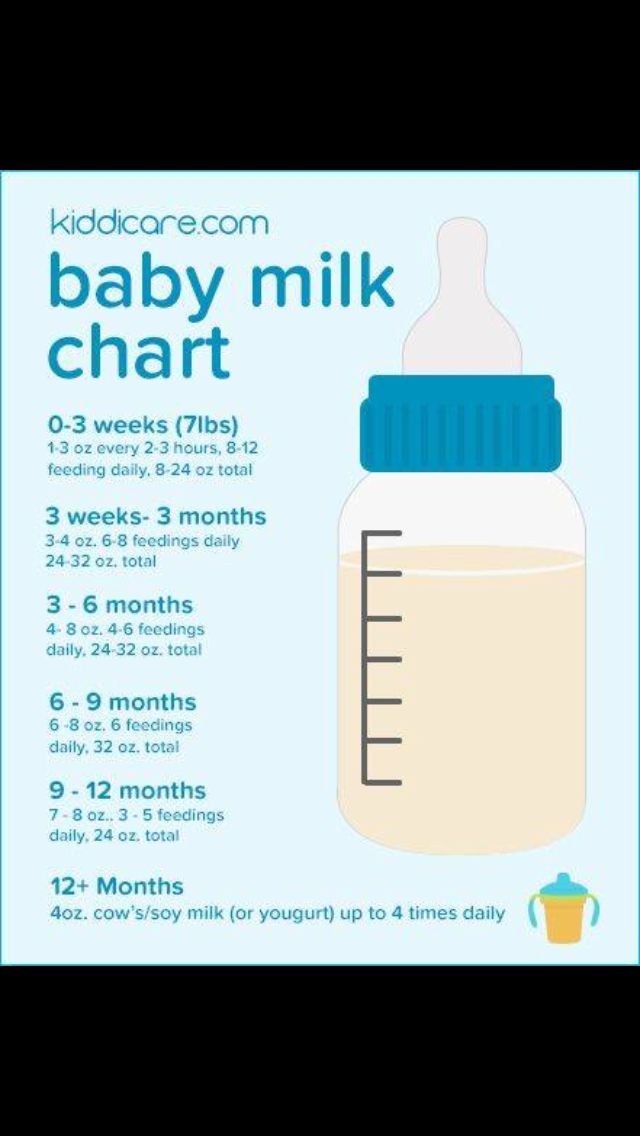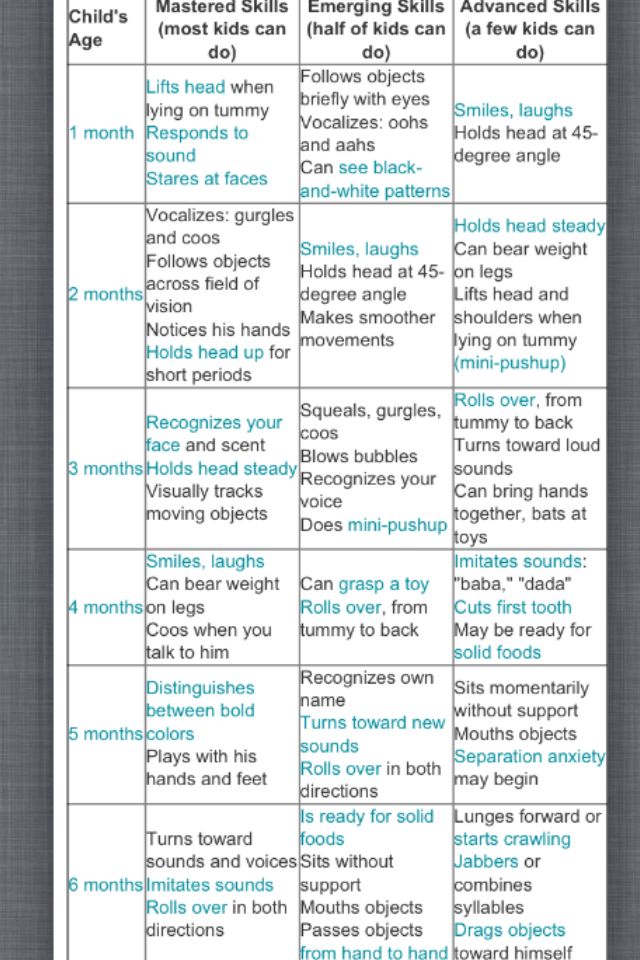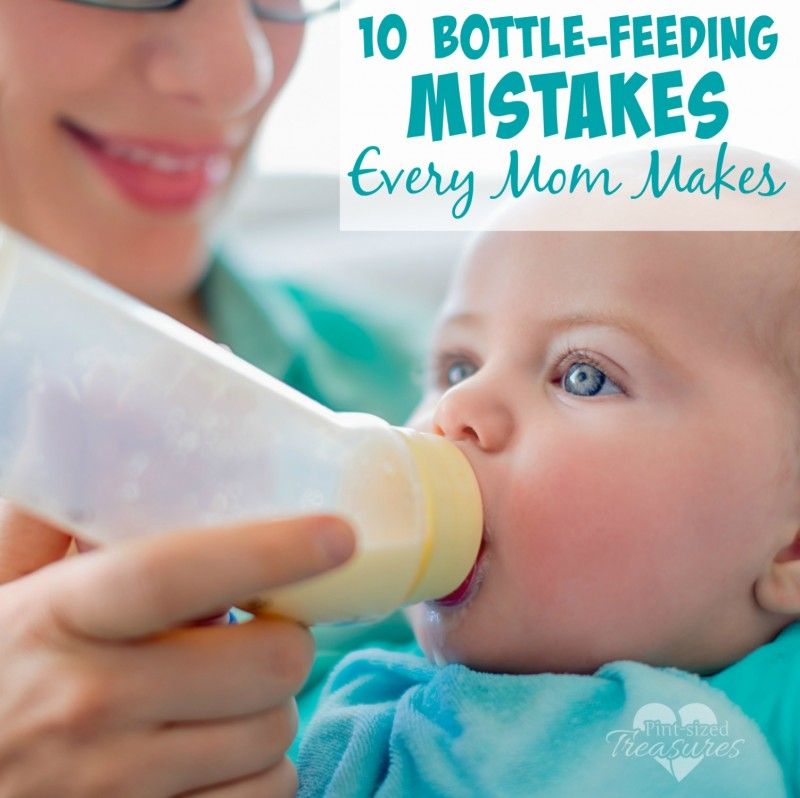How to count baby feeding time
Breastfeeding FAQs: How Much and How Often (for Parents)
Breastfeeding is a natural thing to do, but it still comes with its fair share of questions. Here's what you need to know about how often and how long to breastfeed your baby.
How Often Should I Breastfeed?
Newborn babies should breastfeed 8–12 times per day for about the first month. Breast milk is easily digested, so newborns are hungry often. Frequent feedings helps stimulate your milk production during the first few weeks.
By the time your baby is 1–2 months old, he or she probably will nurse 7–9 times a day.
In the first few weeks of life, breastfeeding should be "on demand" (when your baby is hungry), which is about every 1-1/2 to 3 hours. As newborns get older, they'll nurse less often, and may have a more predictable schedule. Some might feed every 90 minutes, whereas others might go 2–3 hours between feedings.
Newborns should not go more than about 4 hours without feeding, even overnight.
How Do I Count the Time Between Feedings?
Count the length of time between feedings from the time your baby begins to nurse (rather than at the end) to when your little one starts nursing again. In other words, when your doctor asks how often your baby is feeding, you can say "about every 2 hours" if your first feeding started at 6 a.m., the next feeding was around 8 a.m., then 10 a.m., and so on.
Especially at first, you might feel like you're nursing around the clock, which is normal. Soon enough, your baby will go longer between feedings.
How Long Does Nursing Take?
Newborns may nurse for up to 20 minutes or longer on one or both breasts. As babies get older and more skilled at breastfeeding, they may take about 5–10 minutes on each side.
How long it takes to breastfeed depends on you, your baby, and other things, such as whether:
- your milk supply has come in (this usually happens 2–5 days after birth)
- your let-down reflex (which causes milk to flow from the nipple) happens right away or after a few minutes into a feeding
- your milk flow is slow or fast
- the baby has a good latch, taking in as much as possible of your areola (the dark circle of skin around your nipple)
- your baby begins gulping right away or takes it slow
- your baby is sleepy or distracted
Call your doctor if you're worried that your baby's feedings seem too short or too long.
When Should I Alternate Breasts?
Alternate breasts and try to give each one the same amount of nursing time throughout the day. This helps to keep up your milk supply in both breasts and prevents painful engorgement (when your breasts overfill with milk).
You may switch breasts in the middle of each feeding and then alternate which breast you offer first for each feeding. Can't remember where your baby last nursed? It can help to attach a reminder — like a safety pin or small ribbon — to your bra strap so you'll know which breast your baby last nursed on. Then, start with that breast at the next feeding. Or, keep a notebook handy or use a breastfeeding app to keep track of how your baby feeds.
Your baby may like switching breasts at each feeding or prefer to nurse just on one side. If so, then offer the other breast at the next feeding. Do whatever works best and is the most comfortable for you and your baby.
How Often Should I Burp My Baby During Feedings?
After your baby finishes on one side, try burping before switching breasts.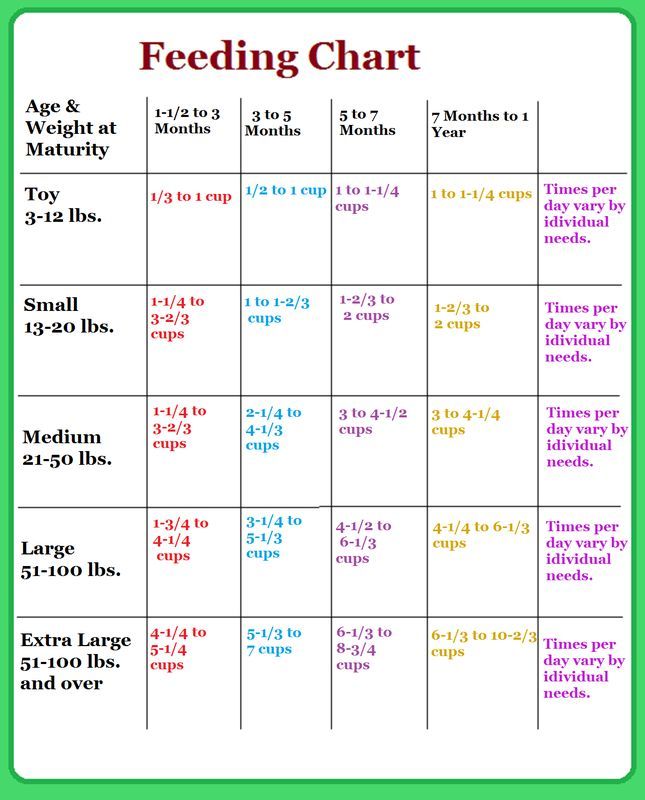 Sometimes, the movement alone can be enough to cause a baby to burp.
Sometimes, the movement alone can be enough to cause a baby to burp.
Some infants need more burping, others less, and it can vary from feeding to feeding.
If your baby spits up a lot, try burping more often. While it's normal for infants to "spit up" a small amount after eating or during burping, a baby should not vomit after feeding. If your baby throws up all or most of a feeding, there could be a problem that needs medical care. If you're worried that your baby is spitting up too much, call your doctor.
Why Is My Baby Hungrier Than Usual?
When babies go through a period of rapid growth (called a growth spurt), they want to eat more than usual. These can happen at any time. But in the early months, growth spurts often happen when a baby is:
- 7–14 days old
- 2 months old
- 4 months old
- 6 months old
During these times and whenever your baby seems extra hungry, follow your little one's hunger cues. You may need to breastfeed more often for a while.
How Long Should I Breastfeed My Baby?
That's a personal choice. Experts recommend that babies be breastfed exclusively (without formula, water, juice, non–breast milk, or food) for the first 6 months. Then, breastfeeding can continue until 12 months (and beyond) if it's working for you and your baby.
Breastfeeding has many benefits for mom and baby both. Studies show that breastfeeding can lessen a baby's chances of diarrhea, ear infections, and bacterial meningitis, or make symptoms less severe. Breastfeeding also may protect children from sudden infant death syndrome (SIDS), diabetes, obesity, and asthma.
For moms, breastfeeding burns calories and helps shrink the uterus. In fact, breastfeeding moms might return to their pre–pregnancy shape and weight quicker. Breastfeeding also helps lower a woman's risk of diseases like:
- breast cancer
- high blood pressure
- diabetes
- heart disease
It also might help protect moms from uterine cancer and ovarian cancer.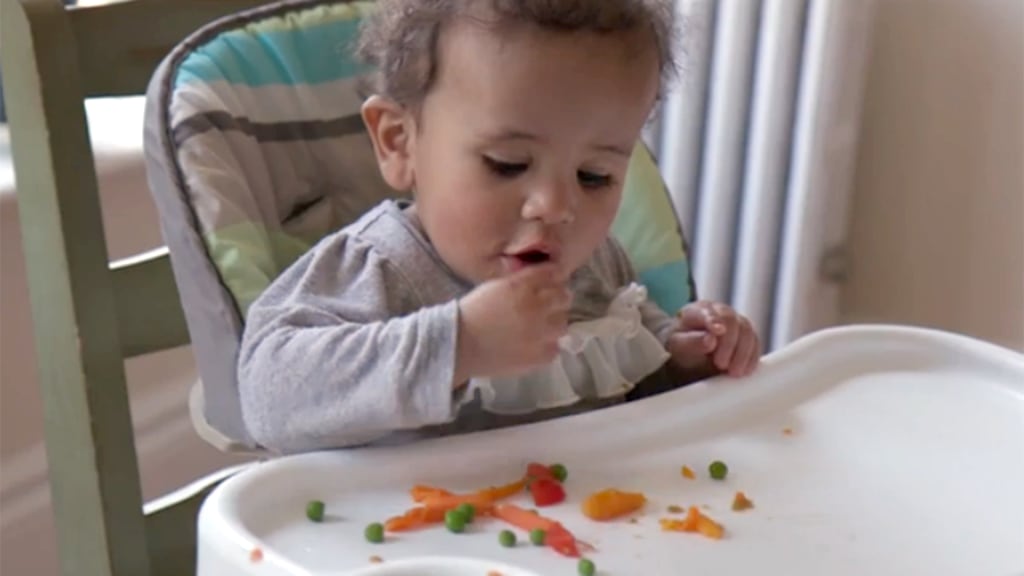
How Often To Feed Your Baby
With the arrival of your newborn baby, you may have questions and concerns about their feeding schedule. This is completely normal. From sleep schedule to feeding schedule, it’s all new to you.
You can rest easy because Mustela’s baby experts are here to address your questions and concerns about newborn feeding schedules and how often to feed your baby.
General Newborn Feeding Schedule Questions
How Can I Tell If My Baby Is Hungry?
It’s normal to think that crying is an indicator of hunger in your newborn, but according to the La Leche League, “Crying is a late feeding cue and indicates your baby is too hungry.”
It may take a while for your newborn to settle down once they get to this point, making feeding time difficult. It’s important to recognize early feeding cues before crying sets in.
It will take you and your baby a few days — or even a few weeks — to adjust and learn each other’s cues. But this adjustment period is important because responding to early feeding cues will help eliminate hunger cries.
But this adjustment period is important because responding to early feeding cues will help eliminate hunger cries.
Look for these signs to tell if your baby is hungry:
- Opens their mouth
- Turns their head toward your chest
- Places their hands and fists in their mouth
- Moves their head from side to side
- Whimpers or makes grunting sounds
How Can I Tell If My Baby Is Full?
Don’t worry about taking the bottle or breast away for fear of your little one getting too full. Newborn babies will stop nursing or taking a bottle during a feeding session when they’re satisfied. Some signs that your baby is full include:
- Pulls away from breast or bottle on their own
- Turns their head away from breast or bottle
- Appears content after a feeding session
How Can I Tell If My Baby Is Eating Enough?
You’re definitely not alone if this is one of your concerns when it comes to feeding your newborn.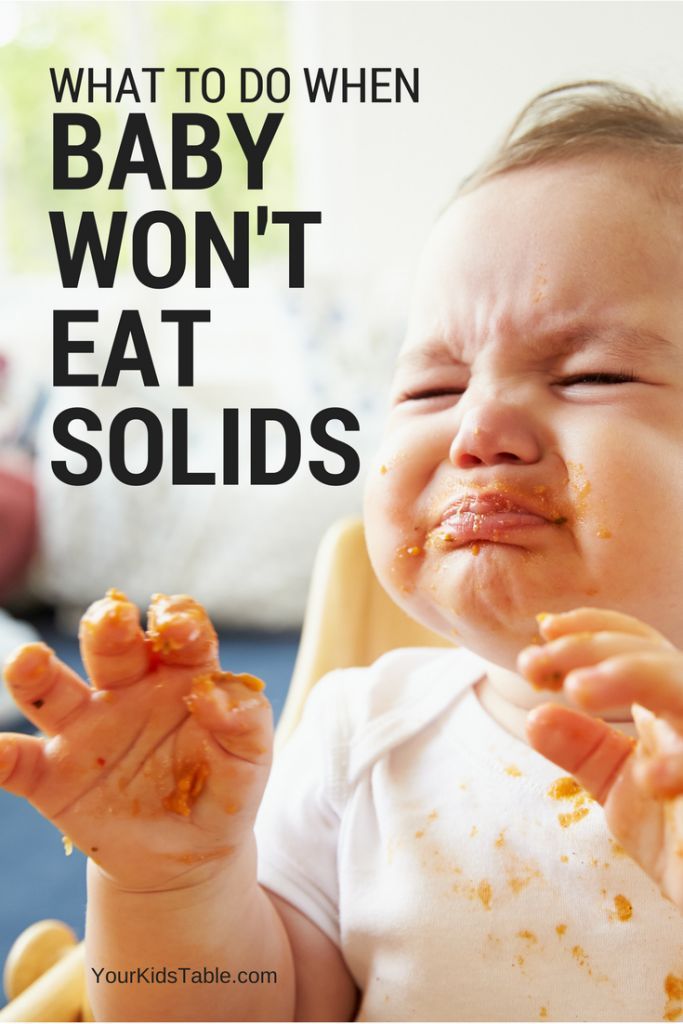 If you're breastfeeding, it’s hard to know how many ounces your baby consumes during a feeding session.
If you're breastfeeding, it’s hard to know how many ounces your baby consumes during a feeding session.
Keep an eye out for the following clues to tell if your newborn is getting enough nutrients:
- Produces four to six wet diapers per day
- Produces regular bowel movements on a daily basis (Use Mustela’s Diaper Rash Cream 123 to soothe your baby’s skin at each diaper change and help prevent diaper rash.)
- Sleeps well
- Stays alert when awake
- Shows weight gain at routine doctor visits
Keep an eye out for the following clues to tell if your newborn is not getting enough nutrients:
- Unsatisfied after feedings
- Little to no weight gain
- Cries or fusses often
- Seems hungry often
Follow up with your baby’s pediatrician if you have any concerns about your newborn’s eating patterns.
Tip: Keep Mustela’s Certified Organic Water Wipes with Cotton and Aloe on hand during feeding time. These resourceful wipes not only provide the best relief during diaper changes but can also be used for quick, gentle cleaning of your baby’s skin after their feeding sessions.
These resourceful wipes not only provide the best relief during diaper changes but can also be used for quick, gentle cleaning of your baby’s skin after their feeding sessions.
Should I Put My Baby On A Feeding Schedule?
While scheduling feedings may seem like a good idea for your newborn, you might want to hold off doing so, at least for the first few months. Not feeding your newborn because you’re watching the clock could reduce your milk production and may even lead to engorgement.
Postponing feedings to follow a schedule may also upset your newborn and result in crying, which is a late sign of hunger.
Should I Wake My Baby Up To Feed Them?
You will need to feed your newborn around the clock. This means waking your baby up in the middle of the night or from a nap to feed them. For example, if it’s been three hours since your newborn’s last feeding, it’s time for a wake-up call.
To make this happen, it’s best to set your alarm.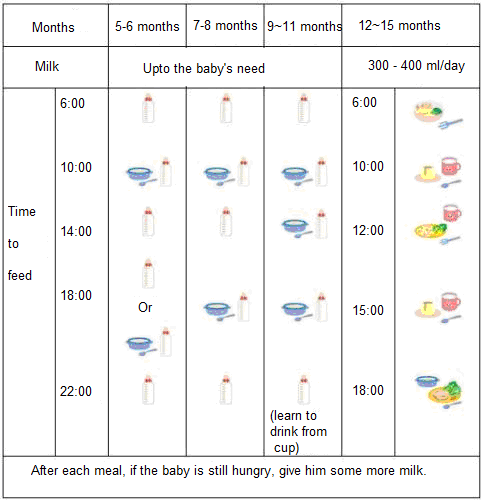 And your baby isn’t the only one who will need the alarm! You’ll want to keep hitting the snooze button, but don’t do it!
And your baby isn’t the only one who will need the alarm! You’ll want to keep hitting the snooze button, but don’t do it!
Your body needs to build up a good milk supply for your little one if you’re breastfeeding. And if your baby is bottle-fed, tag team with your partner or family member so you’re not the only one waking up around the clock.
When your days start running together because of your sleep schedule being thrown off, just remember that this time spent with your newborn baby is priceless!
How To Wake Your Sleeping Baby
Keep in mind that your newborn baby may not easily take the breast or bottle when it’s time to eat because they like to sleep...a lot! Newborn babies are not easy to wake up.
If you’re having a hard time feeding a sleeping baby, try gently unwrapping them if they’re swaddled. Then remove everything but their diaper and place them on your chest. Skin-to-skin contact is always best and is designed for both moms and dads!
Babies have a keen sense of smell, so for the breastfed baby, put them directly on mom’s chest.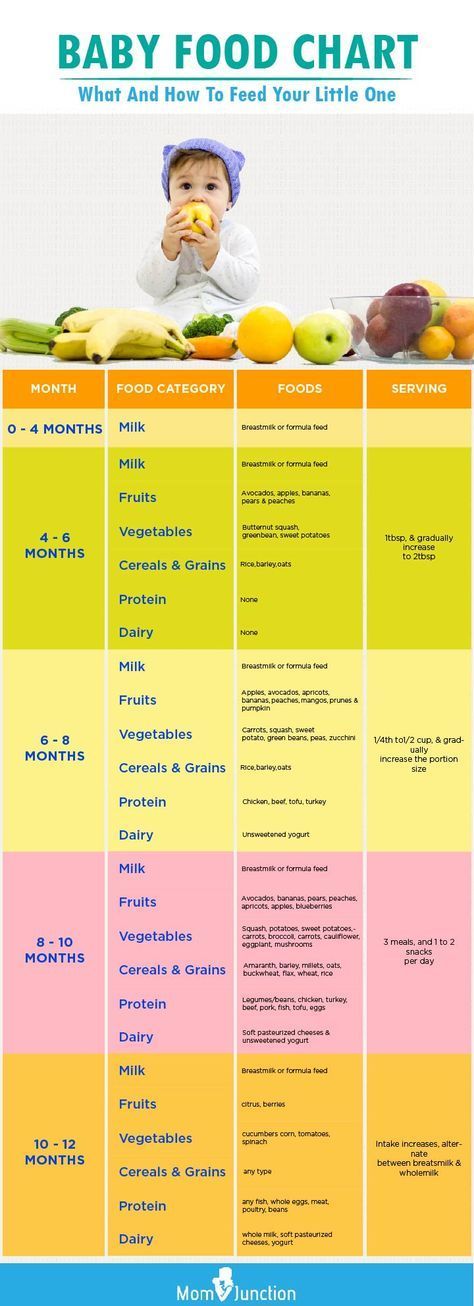 Hopefully they’ll catch the scent of your breastmilk and wake up.
Hopefully they’ll catch the scent of your breastmilk and wake up.
If none of this works, gently massage your baby’s hands and feet, stroke their face, or change their diaper to keep them awake. Try sitting your baby up with one hand supporting their back and the other hand supporting their chin, and talk to them.
Whenever your little one starts stirring, bring them to the breast or bottle right away. Remember to stay calm and relaxed even if you’re tired. Tension and stress can affect your letdown and send stress signals to your baby, keeping them from nursing effectively.
Newborn Breastfeeding Schedule Questions
How Often Should I Breastfeed?
Keep in mind the size of your newborn’s stomach. It’s small! Therefore, your baby may need to eat on demand, better known as “demand feeding.”
Demand feeding means that you breastfeed your newborn whenever they appear hungry. The first few days after birth, it’s OK — and beneficial — to feed your baby on demand.
In the beginning, feedings may take place as often as every one and a half hours to establish your milk supply. It’s completely normal for your newborn to nurse eight to 12 times per day, especially within the first few weeks or even throughout the entire first month.
Breast milk is easier to digest, which is why breastfed babies tend to have more feedings in a day than formula-fed babies. So if you feel like you’re nursing all day, then you’re probably doing something right! As tiring as it may be, this is a good thing because it increases your milk production.
After the first month, feedings will decrease to seven to nine per day. And each month after that, the number of nursing sessions per day will continue to decrease.
Remember, a newborn should go no longer than four hours without nursing in a 24 hour period, even at night.
Expert tip: Apply Mustela's Nursing Comfort Balm in-between feedings to relieve any pain you may experience. This soothing nipple cream will ease discomfort and moisturize sensitized nipples.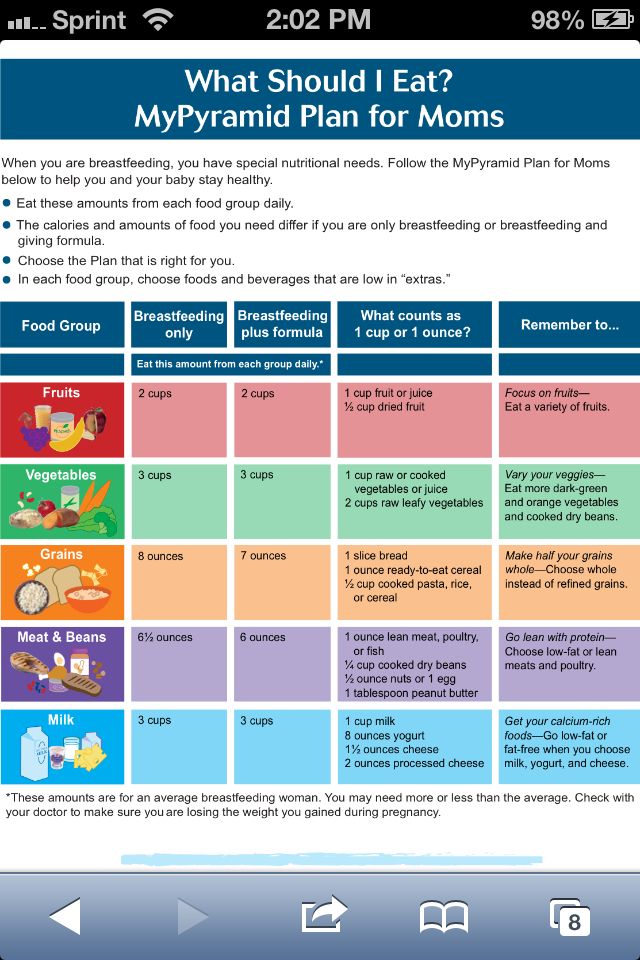
Plus, it’s environmentally friendly, made of 100% naturally derived ingredients, and safe for both you and your baby during prenatal and postpartum pregnancy.
How Long Does It Take To Nurse?
The answer to this question varies depending on the age of your baby and your milk supply. Newborns may nurse up to 20 minutes on each breast, which results in a 40-minute nursing session.
As your baby grows in size and age, they’ll become more efficient at nursing. When this happens, it may only take your baby a total of 10 to 15 minutes to nurse.
Other factors to consider in the length of time it takes to nurse include:
- Time for colostrum to change to milk (The first few days, you will produce a substance called colostrum. It will eventually turn into breast milk. When your breasts start to feel firmer, that’s a sign that your milk supply is increasing and changing. But remember some women’s milk may take more than a few days to come in.)
- Speed of your let-down reflex
- Speed of your milk flow (some are fast; some are slow)
- Position of your baby (latched on correctly)
- Sleepiness of your baby
- Distractibility of your baby
- When your baby starts nursing
Talk with your baby’s pediatrician if you have any concerns about the length of your their feedings.
How Do I Count Feeding Intervals?
If your newborn nurses every two hours, mark the time of your baby’s feeding at the start of the nursing session, not when it ends. Some newborns nurse quickly and some may take a little longer, which is why you can’t count your newborn’s feeding intervals from when they finish nursing.
For example, if your little one begins nursing at 8:00 but it takes them 30 minutes to finish, mark down 8:00 as the time of the first feeding — not 8:30. That would make 10:00 the start time of the second feeding session, even though it’s only an hour and a half after they finished eating.
How Often Should I Alternate Breasts?
Try to offer both breasts during each feeding to sustain your milk supply. Your baby may not take the second breast if they’re full.
Some women find it helpful to alternate breasts in the middle of each feeding session, while others prefer to switch breasts at each feeding so that they’re only nursing from one for an entire session and the other during the next session.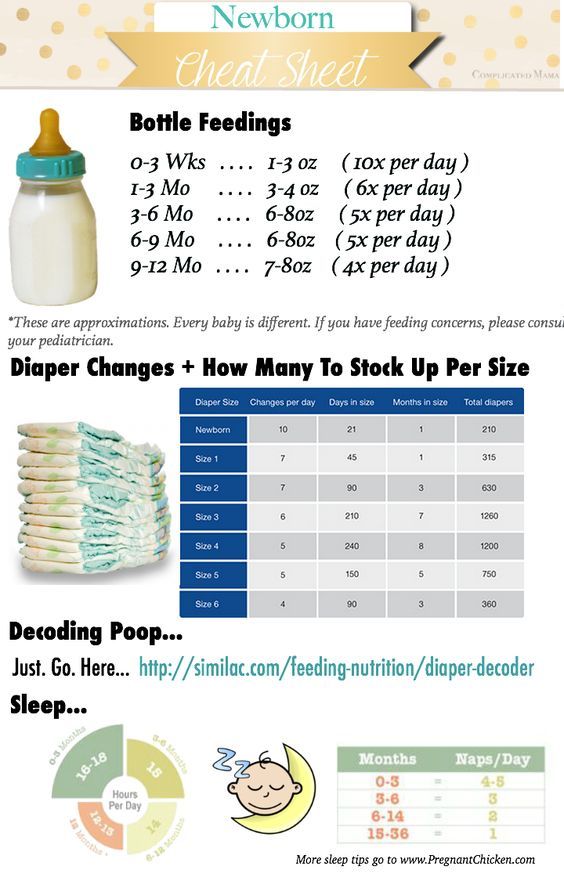
No matter which method you choose, be sure to keep track of which breast you offered last so that you’re giving both the same amount of nursing time throughout the day.
Sore Nipples
Your body is adjusting to a new life — on the inside and outside: you have a new baby and a new body!
During the first few days postpartum, your nipples may be a little sore from nursing. This can make breastfeeding miserable and uncomfortable.
Over time, your body does eventually adjust and sore nipples become a thing of the past! But to help keep your skin comfortable while nursing — especially during those first few days — try our Nursing Comfort Balm, which is a soothing and restorative nipple cream.
This lanolin-free balm moisturizes and protects your nipples, eases discomfort, and helps replenish and restore your skin during and after breastfeeding. Breastfeeding is now a painless pleasure!
Newborn Formula Feeding Schedule Questions
How Often Should I Feed My Baby?
Since your newborn’s tummy is so tiny, you’ll need to feed your baby formula every two to three hours during their first month. As their tummy grows, so will the length of time between feedings.
As their tummy grows, so will the length of time between feedings.
Because formula takes longer to digest than breast milk, formula-fed babies won’t get hungry as often. Typically after the first month, they will eat every three to four hours.
But the newborn feedings are not always mess-free. Spit-up can sometimes accompany them. Keep our Cleansing Wipes handy to clean up your baby’s spit-up, especially during late-night feedings. You’ll be too tired to give your baby a bath at this point — if they’re old enough for a bath.
Mustela’s gentle wipes can be used for everything from wiping your baby’s face or diaper area to cleaning their hands. But the uses and benefits aren’t just for babies. Parents, you can enjoy our cleansing wipes, too!
Moms, use them to remove your makeup and keep your skin smooth, clean, and healthy without the irritation often caused by other makeup removers. And, dads, use them for a quick clean up for your hands and face.
Our wipes are especially effective at gently removing dirt, grime, oil, and makeup!
How Much Formula Should I Give My Baby?
Within the first few weeks, make two- to three-ounce bottles every two to three hours for your newborn. Increase this amount after adjusting to their eating patterns. Look for the following cues to know when to start increasing your little one’s formula intake:
Increase this amount after adjusting to their eating patterns. Look for the following cues to know when to start increasing your little one’s formula intake:
- Finishing a full bottle at each feeding
- Showing signs of hunger after each feeding
Newborns
Newborns drink about 1.5 to 3 ounces of formula every two to three hours. Increase the amount as your baby grows.
Two-Month-Old Babies
Two-month-old babies drink about 4 to 6 ounces of formula every three to four hours. Increase the amount when your baby is able to consume more formula at each feeding.
Newborn Feeding Schedule: A Time For Bonding
Now that you have answers to your questions about newborn feeding schedules and how often to feed your little bundle of joy, you can soak up this precious time with your newborn. It passes quickly, so embrace each feeding session while you bond with your brand new baby.
You can rest assured that you’re giving your newborn the best start when you combine Mustela's products with your newfound feeding knowledge!
Breastfeeding patterns - what to choose
— Polina Alexandrovna, what is the difference between breastfeeding, mixed and artificial feeding?
- The differences between breastfeeding from artificial and mixed clearly explain why feeding regimens differ.
- Normally, by what month should the feeding regimen be established?
- The diet is constantly changing. The older the child becomes, the larger portion of milk he eats, the smaller the frequency of feeding.
After childbirth, when the mother is lactating, the child also develops its own diet. In the first weeks, everything is quite chaotic and there is no regimen as such, and the mother makes sure that the interval between breastfeedings is not more than 2.5 hours (it can be half an hour or two hours) and the child does not remain hungry. From about the second or third week, the baby has more or less regular intervals between feedings. We can say that the regime has been established. But this mode gradually changes as the baby gets older.
- What is the benefit - and what harm can be from feeding by the clock?
pros
- The child knows when it's time to eat - the body adapts initially.
 It's no secret: certain enzymes are needed to digest food. When food enters the child's body regularly, his enzyme system and gastrointestinal tract adjust to the regime, and it is much easier for the child to digest food.
It's no secret: certain enzymes are needed to digest food. When food enters the child's body regularly, his enzyme system and gastrointestinal tract adjust to the regime, and it is much easier for the child to digest food. - A mode of wakefulness and sleep is being formed - at every minute of time, the child understands what will happen to him.
- Parents are not "hostage" to the baby, they have the opportunity to plan their free time - especially mothers, who always do not have enough time. The feeding regime and the regime of wakefulness and sleep make the situation very easy - at every moment the mother knows what awaits her.
Minuses
- Mom keeps a feeding schedule, but doesn't stick to a sleeping schedule - and sets herself a trap. She can get into a situation where the baby is sleeping, and it's time to feed him.
 And it is not clear whether to wake the baby or let him sleep. If you choose a regimen, then it must be observed both in feeding and in laying down.
And it is not clear whether to wake the baby or let him sleep. If you choose a regimen, then it must be observed both in feeding and in laying down. - There are situations when it is difficult to feed the baby on time (for example, you are far from home and you do not have formula). But it is worth foreseeing everything, and there will be no problems. You just need to be able to plan everything correctly.
— How to painlessly accustom a child to an hourly feeding schedule?
For a child, the regimen is not something painful, and if we build a clear daily routine, then, believe me, it becomes comfortable not only for the mother, but also for the baby. This is absolutely normal. But in order to build a regimen, you need to understand what it should ideally be - you must plan what intervals between feedings you want to come to.
The next step is to evaluate where you are right now. For example, you would like to make the interval between feedings three hours, but the baby eats every hour and a half. Of course, if you just suddenly start to pause between feedings at three hours, nothing good will come of it - it will be very stressful for the child.
For example, you would like to make the interval between feedings three hours, but the baby eats every hour and a half. Of course, if you just suddenly start to pause between feedings at three hours, nothing good will come of it - it will be very stressful for the child.
Therefore, you need to act smoothly:
- determine point A, from which you are going, and point B, which you must come to;
- gradually adjust to the mode that we would like to have ideally.
Transition diagram
Now the breaks between feedings are 1.5 hours, and we want 3 hours. We add five minutes each time so as not to injure the child, and at some point we take a break not at 1.5 hours, but at 1 hour 35 minutes, then at 1 hour 40 minutes and so on. The amount of food will also change a little.
- If we talk about night feeding with an hourly schedule, is it necessary to wake the baby when it's time to eat?
- Night feedings are normal for a child up to a year old.
Newborn has no division of day into day and night - there are approximate three-hour cycles. He woke up - ate - slept, woke up - ate - slept. And so every day. For a newborn baby, night feedings are the absolute norm.
For a 1 year old child Feeding 1-2 times a night is normal. But a child of a year may not eat at night.
In order to understand whether it is worth waking up and feeding the baby, you need to know how much he eats per day. Each child at each age has a certain norm - the amount of food that he should eat per day (we always count not per day, but per day).
- If a child has eaten his norm during the day and sleeps at night, then he does not need to be awakened.
- If child for day ate about 70% of his norm , then at night it is advisable to wake him up and feed him.
We always evaluate nutritional adequacy by weight gain.
- If a child in one month has gained weight and height within the norm for his age, then he receives enough nutrition.

- If a child does not gain weight and height , then he needs to be offered food more often at night so that he fits into the norm.
- If there are too many nighttime feeds on an hourly or on-demand basis, what to do about it?
- Night "snacks" do not always indicate the child's need for food. When a child asks for a breast at night, mothers mistakenly think that this is only hunger and nothing more. In fact, a child may worry at night due to a violation of the regime or the so-called negative association for sleep (when he can only fall asleep with a breast).
When there is no regime, the child "does not get enough sleep" of the daily allowance and there is a so-called accumulated fatigue, his nervous system is in a very strong excitation. In such a situation, nightly feedings every hour often indicate that the baby has a violation of the regime - it is difficult for him to get up, his nervous system is overexcited, he physically cannot fall asleep without his mother's breast.
Such night feedings can be identified easily:
- the child wakes up every 40 minutes - 1 hour at night and asks for food, and during the day he usually eats every 3-4 hours - which means that he is unlikely to experience hunger;
- the child eats very little at night - he kissed his breast or a bottle, ate 10-20 g and fell asleep. This means that the baby performed a certain ritual: he waited for his mother, satisfied the sucking reflex, and thanks to this he fell asleep - in such a case, he did not have a goal to eat.
With these night feeds, you need to pay attention to two factors:
- Sufficiency of nutrition - it is worth making sure that the child receives the required amount of food during the day, does not starve during the day and does not get at night the amount of food that should have been received during the day .
- Correct mode - you need to make sure that the child is all right with the mode, there is no accumulated fatigue and a negative association with sleep.
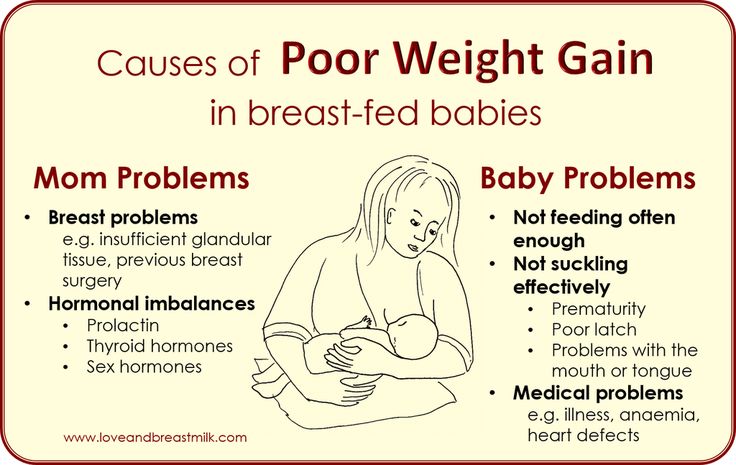
Is it normal for a child not to eat at night or very little?
“This reverse situation may or may not be the norm. It all depends on the age of the baby and on whether he receives enough food in the daytime feeding.
Newborn
It is not normal for a newborn child not to eat at night, he must eat every 2.5-3 hours. When breastfeeding, this is critically important - for the mother to establish lactation, and for the baby to replenish the reserves that he needs.
An unpleasant situation can happen in the first couple of months - the mother is glad that the baby sleeps well and does not wake up at night, and on weighing it is clear that the child not only gained a little, but did not add at all in one month, that is, he is clearly starving.
Newborn babies have this feature: if they receive very little food, they do not have the strength to ask. Therefore, it is extremely important to ensure that a newborn baby eats both day and night!
Infant
A child older than 1.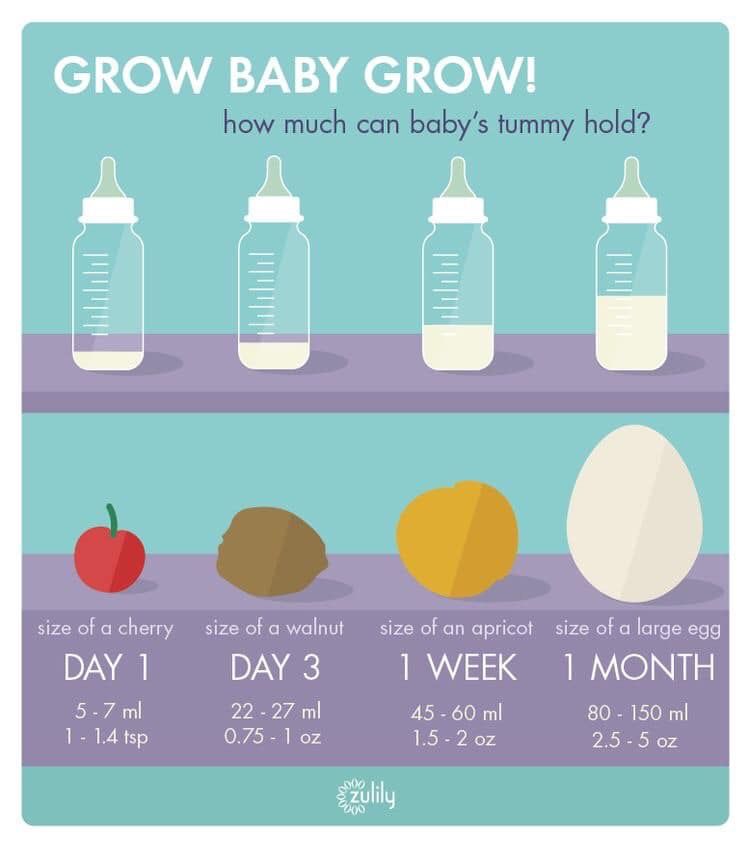 5-2 months adds weight and height within the normal range, eats all the amount of food he needs during the day, feels great, is not crying or irritated, and at the same time sleeps at night - let him sleep to his health. The most important thing is that he gains weight and height - these are the main indicators by which we can assess that the child has enough nutrition.
5-2 months adds weight and height within the normal range, eats all the amount of food he needs during the day, feels great, is not crying or irritated, and at the same time sleeps at night - let him sleep to his health. The most important thing is that he gains weight and height - these are the main indicators by which we can assess that the child has enough nutrition.
— If a mother prefers on-demand feeding, what is the most gentle way for her to organize it?
It is important to understand that one should not go to extremes.
First extreme:
the child sleeps for a very long time, the intervals between feedings are 5-6 hours. It seems to mom that everything is fine, but weighing shows that the child is underweight. Mom waited too long and missed the moment when the child simply stopped asking for food due to exhaustion.
Second extreme:
A 7-month-old baby eats every hour, that is, about 20 times a day. This is, of course, an abnormal situation.
This is, of course, an abnormal situation.
When we talk about feeding on demand, we mean that there is a certain interval between feedings. It varies depending on age:
- for a newborn baby it is about 2 hours;
- for a child older than 1 month - approximately 3 hours;
- closer to 4 months - 3-3.5 or 3.5-4 hours, each baby individually.
NORM - from 2 to 4 hours during the first year of a child's life, and you can deviate from this norm +/- for half an hour. If the intervals between feedings become very short (every hour) or very long (5-6 hours), we adjust them in order to stick to the norm and not go to extremes.
— If a child eats little, but often enough, then what regimen is more relevant for him?
- Little, but often - this is not quite normal. It is important to observe the daily amount of food. If a child consumes a daily norm that he needs by age, and at the same time eats little, but often, it means that either the mother does not have enough milk for the child to eat more and, accordingly, withstand long intervals, or the child is simply already used to it - He can't eat more at one time. In both cases, you need to try to slightly increase the intervals.
In both cases, you need to try to slightly increase the intervals.
We can feed both on demand and on schedule - there is no fundamental difference here. But most likely, if we stay on demand, the baby will continue to feed every hour and his amount of food at a time will be quite small for his age. Therefore, you need to try to maintain a slightly longer interval between feedings and watch how much he will eat.
- There are situations when a child's regimen is disturbed for some reason - allergies, gastrointestinal upset. How soon can you return to your normal routine?
- By and large, the sooner you return to normal mode, the better. Do not worry too much if the child does not eat for several days according to the regimen, this will not affect your condition or the physical condition of the baby in any way. The most important thing is not through force and not aggressively, but very gently to return the child to the regime that he had. The clearer and longer the regime was, the easier it is to return to it.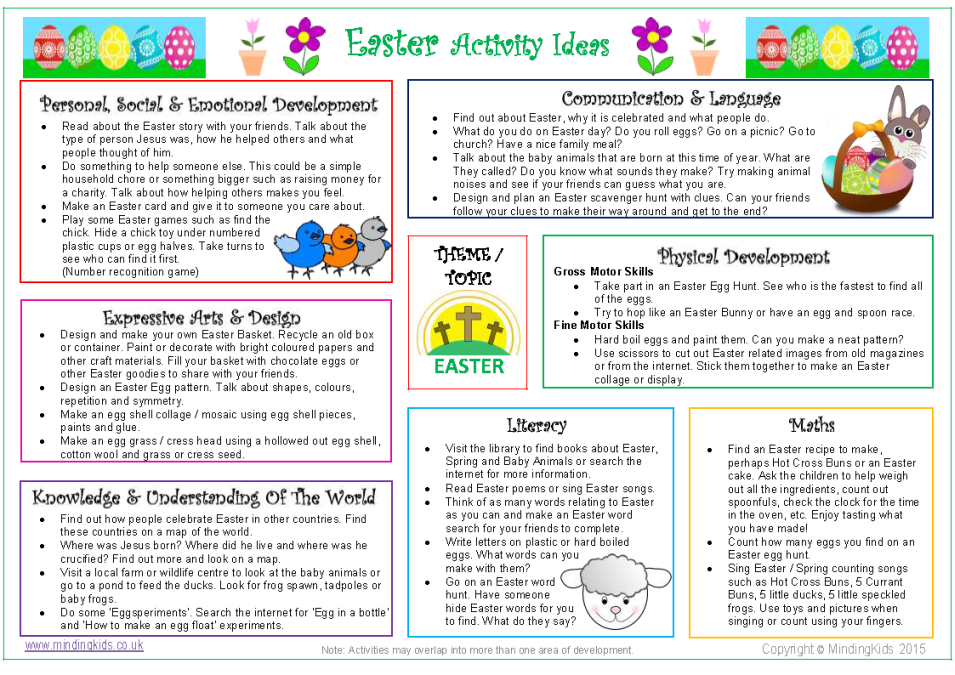
— Why is it important to observe the feeding regimen?
— It is important to observe the feeding schedule:
- For parents — so that the mother is not a “hostage” of the child and understands what will happen in the near future, could plan something or leave the house. This, it would seem, is not so important for the child, but it is important for the general climate in the family, so that the mother feels relatively free, not “tied hand and foot” to her baby.
- For a baby - I am always for the regime and always urge parents to comply with it, because for a child everything should be predictable - he gets used to the order, is drawn into the regime and feels as comfortable as possible. Parents are comfortable when they know what will happen to them - and the baby is much easier when he knows that food or sleep is on schedule - his body begins to adjust accordingly.
— In what cases is it possible to move away from the usual feeding regimen?
— If it is possible not to deviate from the regime, then it is better not to deviate. But if this happened, do not worry, do not blame and do not reproach yourself, nothing critical will happen, even if the child does not eat according to the regimen for a couple of days. Just get back to your routine as quickly as possible and you'll be fine.
But if this happened, do not worry, do not blame and do not reproach yourself, nothing critical will happen, even if the child does not eat according to the regimen for a couple of days. Just get back to your routine as quickly as possible and you'll be fine.
- Polina Alexandrovna, please give examples of the feeding regimen and daily diet for babies of different ages.
— There are a few things to consider when planning your baby's feeding schedule and diet.
- The amount of food that the child should receive per day.
Many mothers, unfortunately, mistakenly believe that the daily volume depends only on the age of the baby. But there is no universal portion, it is more in line with the weight of the baby. So, two children of the same age, but of different weights, will need different amounts of food per day. Therefore, it is quite difficult to find clear instructions on how many milliliters at a time a child should eat in each case.
- Feeding frequency.
In order to calculate the amount of food at one time, you need to know how much food you need per day and how many times the mother will feed the baby - that is, the frequency of his feedings. In this case, you should always focus on children's weight. I recommend scheduling meals with your pediatrician so that everything is tailored to your child's specific needs.
- for a 2-month-old baby - 6-7 times a day and +/- 120-150 ml of breast milk eaten per feeding,
- for a child 5-6 months - 5-6 times a day +/- 180-210 ml of breast milk eaten per feeding,
Feeding babies have larger servings, depending on weight and frequency of feedings. And you need to remember: complementary foods are not an additional amount of nutrition, it must fit into the daily norm, which corresponds to age and is redistributed between complementary foods and breast milk and / or mixture in different percentages.
A breastfeeding, formula-fed or formula-fed baby regimen is a great helper for mom and baby. The regime should not lead to additional difficulties in the family - sit with a stopwatch near the baby, wake him up at night when three hours have passed after feeding. If you adhere to the correct diet and sleep, then both the child and you will have an understanding of what will happen next at any given moment. This will make life easier for the whole family.
* Breast milk is the best food for babies. WHO recommends exclusive breastfeeding for the first 6 months of a child's life and continued breastfeeding after complementary foods are introduced until the age of 2 years. Before introducing new products into the baby's diet, you should consult with a specialist. The material is for informational purposes and cannot replace the advice of a healthcare professional. For feeding children from birth. The product is certified.
Breast milk feeding on demand
You can often hear from a nursing mother: "I feed on demand, my baby requires a breast every 3.
5 hours." Or: “I have always fed on demand. In a year, we already had 1 feeding in the evening, and my child calmly refused to breastfeed. Before talking about the demand of the child, it is necessary to find out what modern women mean when they say - "I breastfeed."
Modern mothers consider breastfeeding essential for feeding their baby. Just for feeding. Breast milk is food, the mother supplies the baby with the nutrients necessary for growth and development. When a baby suckles at the breast, he eats. Breastfeeding makes sense only as a process of supplying proteins, fats, carbohydrates, vitamins and microelements.
During suckling, the baby receives the nutrients it needs with mother's milk. This is the absolute truth. There is another unconditional truth, which is not given any importance in modern society, it is not taken into account and is not considered. Breastfeeding for a child is communication with the mother. We need to figure out how the child understands feeding on demand? Can he understand anything at all? Is there any difference for him how he is fed, for 15-20 minutes after 3. 5 hours or in some other way?
5 hours or in some other way?
What is on-demand feeding
On-demand feeding of a newborn baby means putting it on the breast for every squeak or search. Squeak and search movements in newborns, even as early as the second or third day of life, begin to appear much more often than after 3.5 or 2.5 hours. The need for attachments increases rapidly, and by the 10-12th day of life, the need to attach to a child may occur 15-16 or more times a day. Applications vary in duration. The baby can fall asleep and sleep while sucking for, for example, 1.5-2 hours. Can release the breast after 1-2 minutes. And then ask her again. Why does a child need such frequent contact with his mother's breast?
That's why. Being in the mother's belly, in a calm, familiar environment, listening to the noises of the mother's body, being in a warm, cramped, confined space, the baby sucked his fist, fingers, loops of the umbilical cord, swallowed amniotic fluid. Learned to suck and swallow. After birth, experiencing discomfort for any, the most insignificant reason, the baby tries to get rid of it. You can get rid of discomfort by getting into the usual conditions of a comfortable stay. The only place where the baby after birth can feel the sensations familiar to him is in the arms of the mother. The only familiar action is sucking. The only familiar taste and smell is the taste and smell of milk and lube in the areola. Milk and lubricant have an odor and taste similar to the taste and smell of amniotic fluid. Therefore, experiencing discomfort, the baby squeaks, or begins to look for an object to suck with his mouth. Ideally, it is immediately applied to the chest. The baby becomes warm, cramped, he hears the beating of his mother's heart, breathing, grumbling in the intestines, he sucks and feels the familiar taste and smell. If such an action happens constantly, the baby gains confidence, no matter what happens, he will solve all his problems with his mother. The place of comfort is now under the breast, and you can suck on the breast.
After birth, experiencing discomfort for any, the most insignificant reason, the baby tries to get rid of it. You can get rid of discomfort by getting into the usual conditions of a comfortable stay. The only place where the baby after birth can feel the sensations familiar to him is in the arms of the mother. The only familiar action is sucking. The only familiar taste and smell is the taste and smell of milk and lube in the areola. Milk and lubricant have an odor and taste similar to the taste and smell of amniotic fluid. Therefore, experiencing discomfort, the baby squeaks, or begins to look for an object to suck with his mouth. Ideally, it is immediately applied to the chest. The baby becomes warm, cramped, he hears the beating of his mother's heart, breathing, grumbling in the intestines, he sucks and feels the familiar taste and smell. If such an action happens constantly, the baby gains confidence, no matter what happens, he will solve all his problems with his mother. The place of comfort is now under the breast, and you can suck on the breast.
This whole process is justified from a biological point of view. A newborn child does not feel the feeling of hunger, this feeling is not formed in him. It will begin to form at about two months of age. How to feed a creature that does not experience hunger ?! How to encourage him to take some action to get food? This can be done only at the expense of some other incentives. This stimulus for the newborn is constant bodily discomfort, thanks to which he wants to suckle all the time! The most intense, frequent and prolonged sucking in infants is observed in the first two or three months of life. It is in these first months that the main weight gain of the baby occurs.
Feeding in the first month
Baby falls asleep with the breast in his mouth, sleeps sucking for a while. Falling asleep deeply, lets go of the chest. After sleeping for a while, he wakes up, and is applied on waking. After sleep, he can stay awake for some time, for example, an hour and a half. During wakefulness, he may feel discomfort 2-3 times, for example, from a completely natural desire to pee, and having called his mother for help, having kissed for a couple of minutes, he will do his deeds. Then he will want to sleep, feel discomfort and, kissing his chest, will again fall asleep sucking. After some time, he will wake up and attach again. Then again a little "walk". And after some time, he will fall asleep at the chest again.
Then he will want to sleep, feel discomfort and, kissing his chest, will again fall asleep sucking. After some time, he will wake up and attach again. Then again a little "walk". And after some time, he will fall asleep at the chest again.
The daytime naps of a one-month-old infant feeding on demand vary in duration and number. There can be 4-6 dreams during the day, and they can last from 5-15 minutes to 2-2.5 sometimes 3 hours. "Around" each dream, the baby is applied to the chest, and applied between dreams several times. At night, the child falls asleep at the breast. Usually in the early morning hours, he begins to fuss and apply. In the morning, he almost never fully wakes up. The baby sleeps, from time to time, sucking on his mother's breast. Waking up in the morning, the baby is again applied to the chest. If you count all the attachments that have happened in a baby of one month of age, then approximately 16-20 attachments are obtained. This is how a newborn human cub behaves if it is given the opportunity to behave in accordance with physiological and psychological needs, which, by the way, are genetically determined. The child of the first months of life does not separate his personality from the personality of the mother and from her breast. Mom and her breasts, and everything connected with them, are the universe of the baby and himself.
The child of the first months of life does not separate his personality from the personality of the mother and from her breast. Mom and her breasts, and everything connected with them, are the universe of the baby and himself.
In most cases, a modern woman, being afraid to “accustom a child to hands”, strives to limit his requests for suckling. A pacifier and a bottle of tea or water come to her aid in this matter. They, too, can be sucked ... The need for sucking seems to be satisfied. But only the need for communication with the mother during suckling is not satisfied, the peculiar chain of mutual assistance and cooperation between mother and baby is destroyed, the formation of maternal affection and concentration is disrupted. Is the difference in the two actions noticeable to the reader: the baby cried, the mother took him, put him to her chest and started rocking him, or gave him a pacifier and started rocking the stroller, even with the words “Why are you crying, my sun?”
The modern woman who gives a pacifier and pumps a stroller is not a bad person deliberately harming an infant. She is simply in captivity of prejudices regarding the relationship between mother and baby. She does not know how to behave correctly, does not know what to do in accordance with the natural needs of the child. If you tell her what the child really needs, she will exclaim in horror: “What is it, don’t let him get away with?!” Indeed, the child of the first months of life must not be let off the hook. For a woman who does not know how to comfortably carry a baby, and who does not know how to feed him in various positions (sitting, lying, standing and even moving), this can be very difficult. Especially if she is not sure of the correctness of her actions.
She is simply in captivity of prejudices regarding the relationship between mother and baby. She does not know how to behave correctly, does not know what to do in accordance with the natural needs of the child. If you tell her what the child really needs, she will exclaim in horror: “What is it, don’t let him get away with?!” Indeed, the child of the first months of life must not be let off the hook. For a woman who does not know how to comfortably carry a baby, and who does not know how to feed him in various positions (sitting, lying, standing and even moving), this can be very difficult. Especially if she is not sure of the correctness of her actions.
An action that should become automatic for the mother of a newborn: when the baby cries or shows other signs of anxiety, put the baby to the breast.
What's next?
The baby is growing. A fairly stable rhythm of daytime sleep begins to form in him, and a 3-4-month-old baby behaves quite differently from a newborn.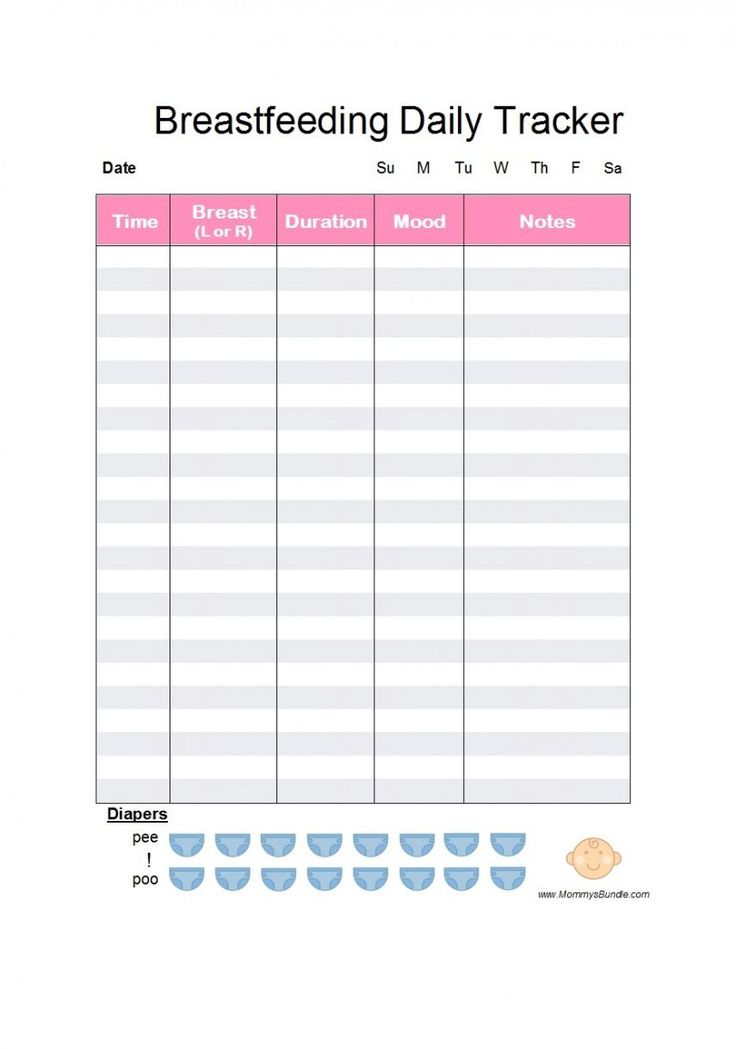 Feeding on demand at this age looks something like this...
Feeding on demand at this age looks something like this...
- At three months, the baby has 10-12 feeds during the day and 2-4 at night. There are frequent applications for a short time, but their number is reduced. There may be a long night break in feedings, about 5 hours, but this is very rare. Much more often the night break is 2.5-3.5 hours. By this age, the baby's body is noticeably rounded.
- At four months, the baby begins to breastfeed noticeably less frequently. The main feedings are associated with sleep: the baby suckles before bedtime, during awakening and during sleep, both daytime and nighttime. In this regard, he has a fairly accurate feeding regimen. And many babies stop breastfeeding when they wake up after daytime sleep, sometimes as early as 2.5-3 months.
- At five months, the baby has 8-10 daytime feedings and 2-3 nighttime feedings, as well as in the fourth month of life, they are organized around dreams - the baby eats when going to bed and some babies suckle when they wake up.

- Feeding regimen changes at six months. The most active sucking shifts to the last 2-3 hours before waking up from a night's sleep. The period of daytime wakefulness can be divided into two periods: in the morning, when the baby sucked during the night is rarely applied to the breast, and in the evening, when attachments become very frequent. In total, there can be 7-10 day applications and 3-4 night applications. At this age, the baby begins a period of acquaintance with new food - pedagogical complementary foods. Sometimes there are attachments associated with the introduction of complementary foods, the baby “washes down” samples of new food with mother's milk. But many children do not want to drink complementary foods. When complementary foods are introduced to an on-demand baby, it is never meant to replace feedings with complementary foods. This is practically impossible, because the main feedings of the baby are associated with sleep, and mother's breakfasts, lunches and dinners, during which the baby gets acquainted with new food, are located between the baby's dreams, during his wakefulness.

- At seven months, the frequency of applications is about the same.
- At eight months, the feeding regimen changes. Since the baby shows high motor activity and is very busy exploring the surrounding space, in the daytime he forgets to breastfeed. In this regard, the number of daily feedings can be reduced to 6-8 times. The baby compensates for the reduction in daytime feedings by increasing the frequency and duration of nighttime feedings up to 6 times.
- In the second half of the year, babies who stopped breastfeeding when waking up after daytime naps recall this habit again. The baby’s daytime sleep in the second half of life, as well as in the region of a year and older, looks something like this: the baby falls asleep sucking, sleeps quietly for a while, for example 1-1.5 hours, then starts tossing and turning, fiddling, worrying, at this moment the mother lies down next to , gives him a breast and the baby can fill up 10-15-30 minutes sucking. Mom may well use this time for her own rest - lie down, read, while the baby sleeps while sucking.
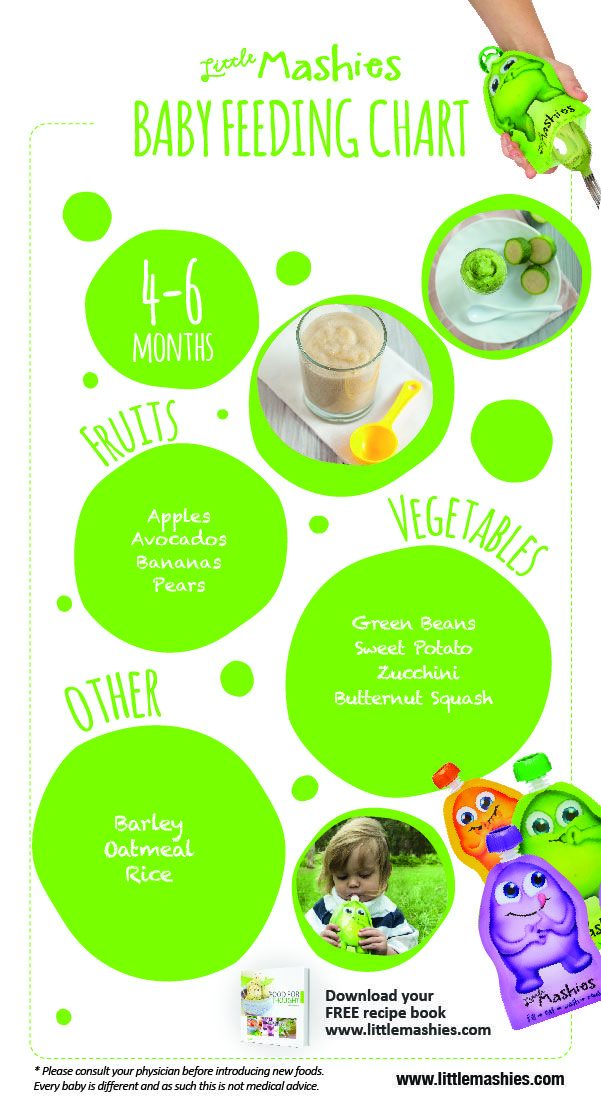 I know my mother, a lover of embroidery, who used this time specifically for embroidery ...
I know my mother, a lover of embroidery, who used this time specifically for embroidery ... - Breastfeeding becomes more frequent at nine to ten months. In the daytime, this is 4-6 full feedings and about the same number of attachments for various reasons. The baby has new reasons for attachment. If, during active actions to master the world, the baby fills a bump or gets scared, he calms down with his mother's breast. There may be situations when you can comfort the baby by sitting next to him and hugging him. At night, 4-6 feedings remain, the baby begins to suckle more actively in the morning between 3 and 8 hours.
- At eleven months, a baby can already have 2-3 complete complementary foods. Initiation to adult food in the mind of a child is not associated with breastfeeding: attachment to the mother's breast is something other than the desire to get enough of the product they like. As a rule, after the baby has eaten, he feels the need to attach himself to the breast.
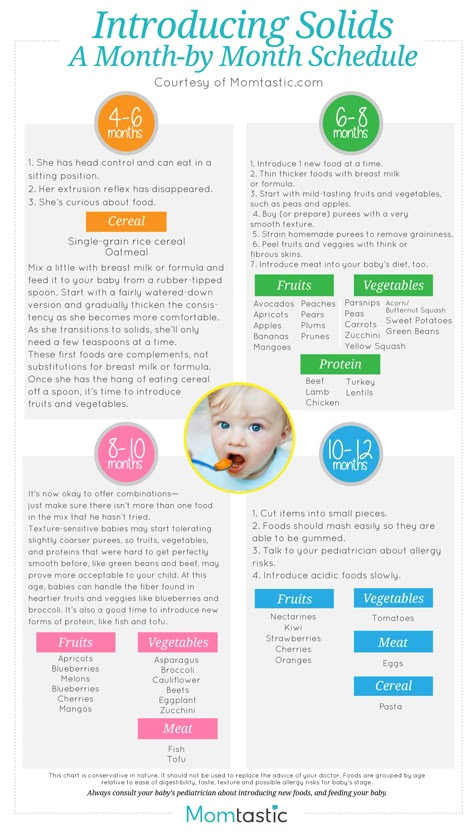 The number of daily feedings remains the same in the child, but the number of short-term attachments increases. There are active mid-morning feedings between 4 and 8 o'clock in the morning.
The number of daily feedings remains the same in the child, but the number of short-term attachments increases. There are active mid-morning feedings between 4 and 8 o'clock in the morning. - At ten or twelve months, the baby, if he is already walking, can sometimes breastfeed every time he comes to his mother, i.e. about every 15-30 minutes. Attachments around dreams and night sucking persist. Therefore, if a mother says that a child suckles once or twice a day, this means that there is no feeding at the request of the child. There are restrictions imposed by the mother, with which the baby has come to terms. He treats breast sucking like food, sucks on a pacifier or a finger to fall asleep or soothe, or falls asleep just like that, without calming down.
- At twelve months, the baby is applied in about the same way.
- At the age of one and a half years, there may already be one daytime nap, so there are fewer attachments associated with sleep. Preserved for morning sucking.
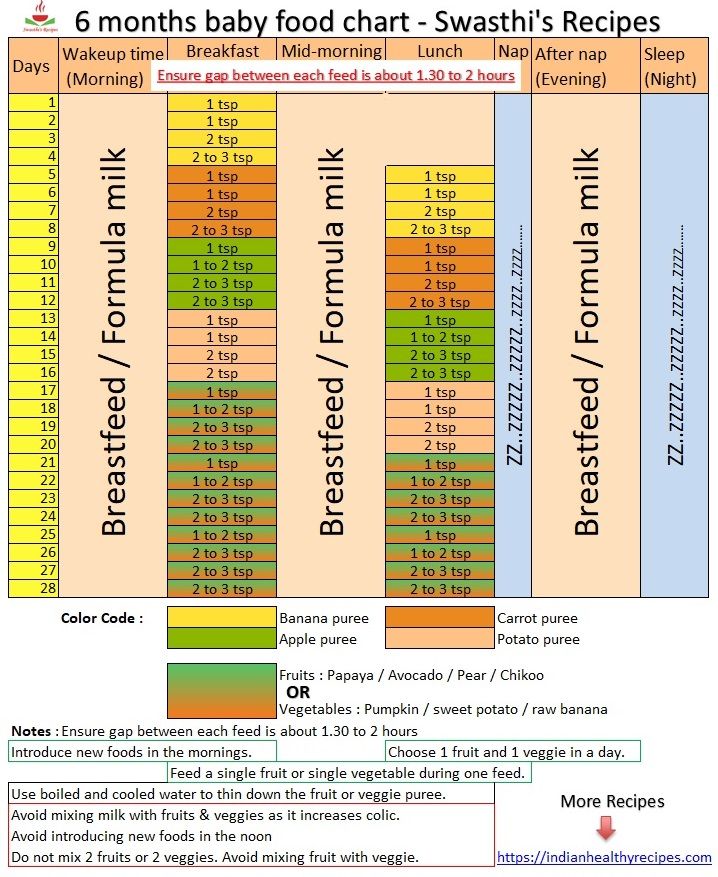 The baby is very free with his mother's breasts. Sometimes it happens that he comes up to suck just for fun. For example, like this: he comes up, climbs on his knees, looks into his mother’s face, smiles, starts to swarm in his shirt, gets breasts, smiles at his breasts, sucks for 30 seconds and leaves.
The baby is very free with his mother's breasts. Sometimes it happens that he comes up to suck just for fun. For example, like this: he comes up, climbs on his knees, looks into his mother’s face, smiles, starts to swarm in his shirt, gets breasts, smiles at his breasts, sucks for 30 seconds and leaves.
As for the number of feedings per day when feeding a child on demand, their number is almost never less than 12. A newborn has 12 or more attachments, mostly they are all associated with dreams. And a child, say 1.5-2 years old, can also have about 12 attachments, only 3-4 are associated with sleep, and the rest are short-term attachments for various reasons. I suggest to all mothers reading this text - do not count the application, do not notice their duration. Breastfeed your baby as often as he asks, when you feel the need to.
Mothers who do not think about breastfeeding without looking back at the clock may get the impression that when feeding on demand, the mother can do nothing but feed the baby. This is not true. After the birth of a baby, a mother begins another life, she is called life with a baby. That's all. The child is with the mother, not the mother with the child! Feel the difference! You need to be able to organize your life in a different way, in the first months, of course, the help of loved ones is very necessary. In the tradition of many peoples, it was customary for the first 40 days after childbirth to remove a woman from any housework and household chores, she was engaged only in a child. In some nations, objects that the mother of a newborn touched were considered “unclean”, therefore, they preferred to protect the mother from the rest of the household, allocating her a separate “corner” of the house, where no one bothered her and she did not interfere with anyone. Among the Slavs, such a restrictive custom was called a six-week. By 1.5-2 months, the rhythm of daytime dreams begins to form, and the baby has a kind of “regime”, the mother becomes more free.
This is not true. After the birth of a baby, a mother begins another life, she is called life with a baby. That's all. The child is with the mother, not the mother with the child! Feel the difference! You need to be able to organize your life in a different way, in the first months, of course, the help of loved ones is very necessary. In the tradition of many peoples, it was customary for the first 40 days after childbirth to remove a woman from any housework and household chores, she was engaged only in a child. In some nations, objects that the mother of a newborn touched were considered “unclean”, therefore, they preferred to protect the mother from the rest of the household, allocating her a separate “corner” of the house, where no one bothered her and she did not interfere with anyone. Among the Slavs, such a restrictive custom was called a six-week. By 1.5-2 months, the rhythm of daytime dreams begins to form, and the baby has a kind of “regime”, the mother becomes more free.
For a mother who can't imagine breastfeeding without looking back at the clock, and who is sure that the “right” baby is the baby lying quietly in her crib all the time, feeding on demand will be a complete hassle.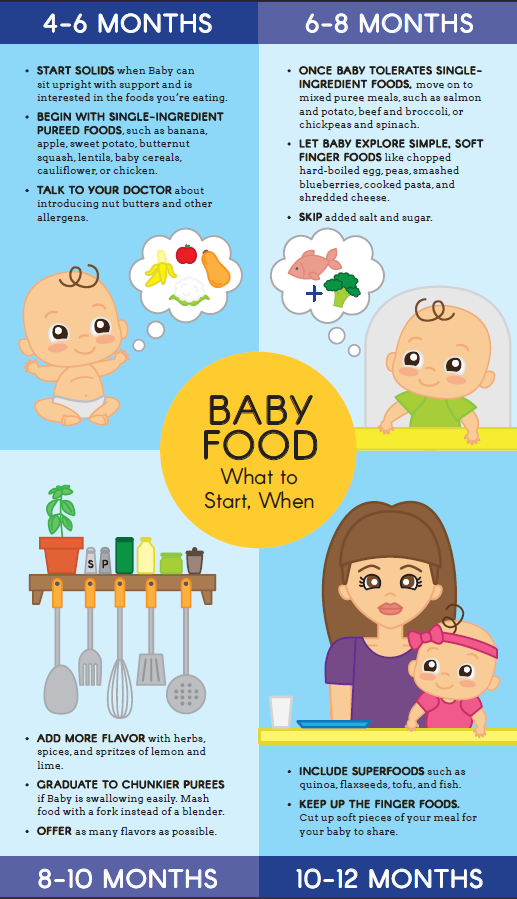 It will be much easier for such a mother if she stops looking at the clock and ties the baby to herself with a large scarf or uses a patchwork holder (sling). It will become easier for her if she stops running between the nursery and the kitchen, but takes the baby with her to the kitchen and carries him around the house with her, doing housework, in a box, a cradle, a special chair, if she tries not to put him off often, and pick up as soon as possible, postponing the baby only in case of emergency and not for long.
It will be much easier for such a mother if she stops looking at the clock and ties the baby to herself with a large scarf or uses a patchwork holder (sling). It will become easier for her if she stops running between the nursery and the kitchen, but takes the baby with her to the kitchen and carries him around the house with her, doing housework, in a box, a cradle, a special chair, if she tries not to put him off often, and pick up as soon as possible, postponing the baby only in case of emergency and not for long.
Breastfeeding is not the same as house arrest. In the conditions of modern society, it is possible to organize the exit of a nursing mother to work from about 6 months of age of the baby. If necessary, you can start working from the age of 4 months, but, of course, it is better not every day of the week and not full time. It is the responsibility of a breastfeeding consultant to help a mother organize her return to work.
Sometimes, when I advise mothers on breastfeeding, I suggest that they forget for a second that they are already living in the 21st century. I propose to return, for example, to the cave and ask what they will do if the child woke up at night, how to calm him down? If you are walking through the forest and trying not to attract the attention of predators, how to make the baby silent? If the child is thirsty, what will you give him? What is the baby used to, for thousands of years of its existence? To the fact that he sleeps on his mother while she wanders through the forest with a digging stick in search of roots, and wakes up when mother stops. Since mom stopped, then there is time to wake up and suck. Therefore, even now the child sleeps well, tied to the mother with a patchwork holder, wakes up when the mother, having done a few household chores, sits in a chair to take care of the baby.
I propose to return, for example, to the cave and ask what they will do if the child woke up at night, how to calm him down? If you are walking through the forest and trying not to attract the attention of predators, how to make the baby silent? If the child is thirsty, what will you give him? What is the baby used to, for thousands of years of its existence? To the fact that he sleeps on his mother while she wanders through the forest with a digging stick in search of roots, and wakes up when mother stops. Since mom stopped, then there is time to wake up and suck. Therefore, even now the child sleeps well, tied to the mother with a patchwork holder, wakes up when the mother, having done a few household chores, sits in a chair to take care of the baby.
Some mother, reading about the cave, will be offended, saying that she is a civilized creature. But please think. Man, mother's breast and mother's milk have been created by evolution over millions of years. They are made for each other. Baby food has created progress and more recently. The skills of motherhood and breastfeeding have also been lost by our society quite recently. A person is not physiologically adapted to artificial feeding and a pacifier. The mother's breast will not produce enough milk at 6-7 feedings per day. Nature did not know, when creating man as a mammal, that the time would come when the need for breastfeeding would be satisfied by some kind of pacifiers and nipples.
Baby food has created progress and more recently. The skills of motherhood and breastfeeding have also been lost by our society quite recently. A person is not physiologically adapted to artificial feeding and a pacifier. The mother's breast will not produce enough milk at 6-7 feedings per day. Nature did not know, when creating man as a mammal, that the time would come when the need for breastfeeding would be satisfied by some kind of pacifiers and nipples.
Changes that occur during the formation of the personality of a child who did not have full contact with the mother during prolonged breastfeeding are noted by modern research by psychologists and sociologists. These are changes with a minus sign. It would be better if they were not, these changes.
Breastfeeding is important not only for the baby, it is also important for the mother. During on-demand feeding, the woman's feelings change, a stronger attachment to the baby is formed, the woman becomes more sensitive to the needs of the baby.